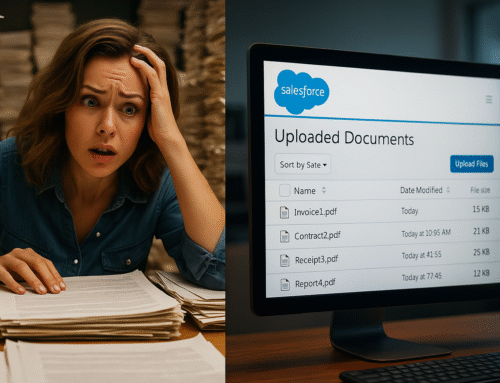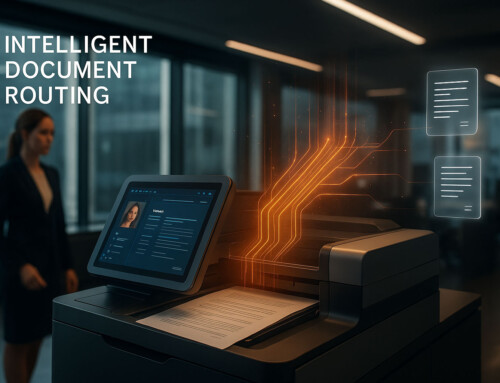
Managing business documents is difficult. Managing business documents quickly is all but impossible. Most business persons who share both these beliefs have two other things in common. They find it challenging to get things done at the office and they haven’t used ccScan.
ccScan is a document management system that lets you upload your documents to the cloud. It enables you to find the information you’re looking for without sifting through piles of paper. This, as you might guess, will save you precious time, reduce labor costs and boost productivity.
Have doubts about any of these claims? Then you need to know how a document management system could benefit your business and help it achieve its organizational goals. Here are X reasons your business needs a document management system:
What is a Document Management System?
Document Management Systems (DMS) capture, scan, and import documents directly to the cloud storage. They rely on a scanner and, in most cases, upload electronic copies of the documents to document providers such as Google Drive, SalesForce, Box and others.
Some people believe that document management is the same as records management. They are mistaken. While document management caters to the day-to-day capture, storage, modification and sharing of files, record management establishes policies for document management.
Finding the concept hard to understand? Here’s an example. Document management systems focus on reducing misfiled and lost documents, ensure faster retrieval of documents, and helping organizations improve the way they organize existing documents.
Record management, on the contrary, concerns itself with establish an audit trail of stored documents. It also ensures that the records are preserved throughout the document’s life cycle. And, as stated above, the policies with which documents are maintained in the cloud.
Why Your Business Needs a Document Management System?
Here are eight reasons why businesses could do with a document management system:
1) Secure storage of data
Businesses that are still maintaining physical documents are taking a massive risk. Such documents are always in danger of being at the receiving end of mishaps such as fire or floods. They can also be lost during transportation or storage and wear out with time, too.
Document management systems sort these problems for good. They keep your documents safe in SalesForce, Google Drive, etc., shielding them from the risk of damage or loss. These systems also give you the power to decide who could and couldn’t access the documents, ensuring their safety.
That’s not all. The best document management systems also leave an audit trail of who might have viewed a specific document, when they accessed it and how they modified it. Some document digitization software go so far as to let you tag your documents for automated alerts.
2) Enhanced productivity
Businesses that store documents physically are inadvertently hurting the productivity of their people. Even if the whole process of sorting a piece of paper, tagging it, and filing it under the relevant document goes without a hitch, it may take as much as five minutes.
More time is wasted when a piece of paper is to be searched from a file and transferred to the relevant person’s desk. This, in turn, hurts the productivity of people in your organization who are stuck performing tasks that are a wasteful expenditure of their concentration and effort.
However, if you switch to a document digitization solution, the same task can be performed within a matter of seconds. The relevant person can quickly enter the file’s ID into the DMS and get what they need, freeing the people in your business to focus their energies on more productive avenues.
3) Easy access to data
Imagine for a moment the effort it takes to retrieve data from a physical storage space. The person entrusted with the task must sift through layers of paperwork to trace that one piece of paper that contains the information critical for the business’s present (and perhaps future) operations.
Even if the documents are neatly stacked, carefully tagged, and meticulously organized, the time required to leave one’s workstation and travel all the way to the documents room and search for one paper in a stack of thousands could stretch between a few minutes (at best) and several hours (at worse).
However, with the built-in search function of a DMS, all you need is a few seconds to look for an old file in a database of thousands and retrieve the critical information it contains. The ease with which you can access data is one of the primary reasons your business needs a document management system.
4) Restrict access to confidential documents
Which businesses could benefit the most from restricting access to confidential documents? Law firms come to mind because their archives are full of sensitive documents that the law bounds them to keep away from the prying eyes of non-essential persons.
That’s precisely what the best document management systems do. They allow law firms to set different levels of access for different users, thereby ensuring that a low-level or non-essential employee cannot access case-specific or confidential documents.
Unauthorized users are therefore barred from accessing files without the written permission from a designated administrator – mostly the lawyer handling the case in question. This, in turn, keeps law firms safe from dealing with compliance problems.
5) Improved team collaboration
Digitization of office documents not only makes key information easy to access. Neither does its benefits are limited to enhanced productivity and secure storage of data. Instead, by centralizing your business’s entire data, it improves team collaboration, too.
Take the example of law firms to understand this point. In a typical case, lawyers and their associates have to work with each other, and their client, to stay abreast of the latest developments involving the case. This requires sharing hundreds of documents, memos, case files, etc.
Without a DMS coming to their aid, they must physically copy and share such documents, a time- and effort-consuming process. A document management system, by uploading every piece of information in the cloud, lets authorized members access it from anywhere, resulting in improved team collaboration.
6) Lowers costs
According to an estimate, keeping physical documents in the workplace costs businesses close to $50,000 per annum in paper, space, and filing cabinet costs. That too if you have a file manager – without which the cost might balloon to half a million dollars!
All these costs are enough to hurt the bottom line of a massive organization. For a small or medium-sized business, they might send it packing altogether. Which is why we suggest that you seriously explore the idea of digitization of office documents.
The need to lower costs is especially acute for educational institutions facing the twin danger of COVID-19 and decreased funding. Otherwise, with more and more students exploring the idea of home-schooling, they might end up going out of business.
7) Makes retrieval easier
Did you know that finding a misfiled paper document costs US companies about $120? Lost documents cost even more, forcing businesses to spend almost $220 on average to recreate them. The most shocking aspect about these numbers is that they’re only the tip of the iceberg.
An average US company misfiles 20% of its documents each year. Research has further found that 7.5% of all physical documents get lost at some stage, with another 3% getting misfiled and professionals spending almost 50% of their time looking for lost documents.
Find these numbers too troublesome? You can keep them at bay by investing in a document management system. By scanning all your documents to the cloud, the DMS will bring your lost and misfiled document costs to zero. What more can you ask for!
8) Brings down overhead
Governments across the world can bring down their overhead by opting for a document management solution. It will eliminate the need for every document to make multiple copies of the same document for its own staff and to share with other departments.
Instead, with all the documents tucked away in a portal where anyone with access can view them, the need for photocopiers would be significantly reduced. This won’t only bring down the overhead of government departments but will also make them more efficient.
How to Choose a Document Management System?
Keep these tips in mind while choosing a document management system:
- Ease of use: It goes without saying that the system should be easy to use. Everyone from the person sitting at an executive position in your organization to a line manager should be able to use it without any confusion.
- Multiple searching options: The system should offer a wide array of searching options. You should be able to search the file by its name, the date you last modified it, its type, format, and more.
- Process automation: The DMS must eliminate manual steps by automating jobs. This means it should be able to process documents with minimal human oversight or human involvement. Which is precisely what ccScan
- Security features: The system should give the administrator the choice to restrict access to documents. It should also enable you to decide who can and cannot see specific files and folders.
Conclusion
A document management system like ccScan would bring many benefits to your business. It might lower your overhead costs, boost the productivity of your employees, improve their collaboration with their co-workers and make the retrieval of key information a cinch.





